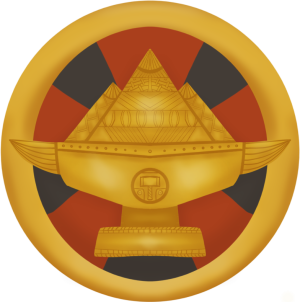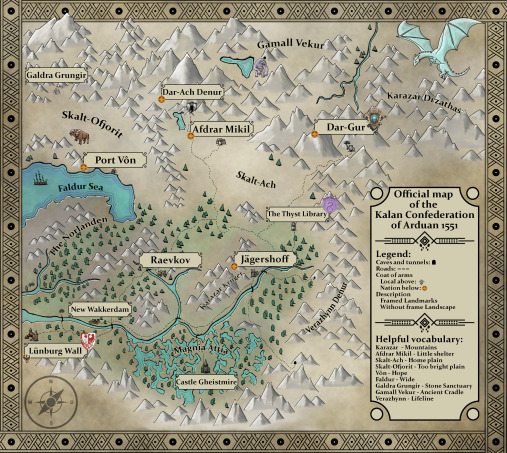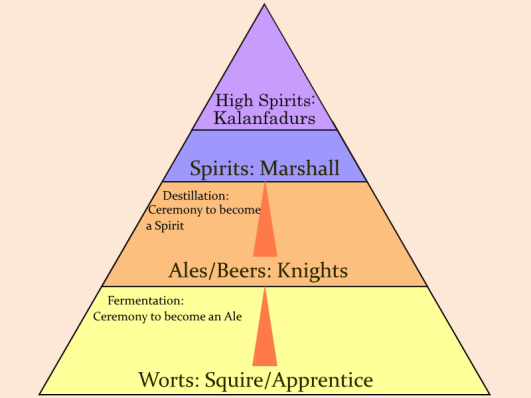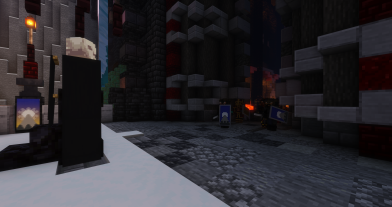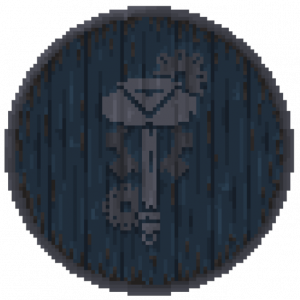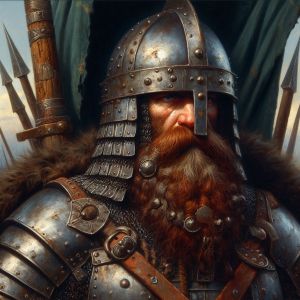Kalan Confederation of Arduan
|
| Location | Drzathas Mountains |
| Races | Denur |
| Primary Religions | The Attarsal
Traditional Spirit Beliefs |
| Political System | Council of the Great Kalans
(elective monarchy) |
| Ruling Kalan | Kalan Rustcracker |
| Preceded by: | The High Kingdom of Arduan |
Introduction
The Kalan Confederation of Arduan, nestled amidst rugged peaks and ancient mountains, is a realm where the enduring spirit of the denuran people is both celebrated and tested. Renowned for its formidable fortresses and intricate craftsmanship, Arduan seamlessly blends tradition with innovation. The Confederation is a vibrant mosaic of Kalans, each guided by a Kalan Leader who combines ancestral wisdom with pragmatic leadership. The landscape is alive with bustling forges and grand halls, where the clang of hammers and the hum of arcane machinery resonate throughout the land. The society thrives on mutual respect and loyalty, with Kalan members dedicated to preserving their heritage while embracing new advancements. Progress is of paramount importance in Arduan. The Confederation relentlessly pursues technological superiority, with inventors and engineers channeling their intellect and creativity into groundbreaking innovations. From powerful war machines to intricate devices, their work continually reshapes the world. Inspired by the wisdom of their ancestors and driven by the spirit of their forebearers, these brilliant minds strive to push the boundaries of possibility. In Arduan, the quest for technological excellence is more than a goal; it is a core aspect of the nation’s identity, ensuring its leadership in both defense and daily life.
Culture and Society
The Denur are a traditional people, with one of their most important traditions of old being the pursuit of progress. This may seem contradictory to outsiders at first, but works out in practice quite well in the efficient and practical way the Denur pursue all their tradition and culture. In Denurûm, the word Denur literally means “Child of the Earth”, which explains the Denurs’ self-image. The Denur view the northern mountains as their communal possession as brothers and sisters in stone and are culturally incentivised to share about everything amongst their kin. A Kalan is expected to provide everything needed for its members, while the members are expected to devote themselves to the Kalan. Towards outsiders this communal attitude is practically nonexistent, painting the common stereotype of the Denur being a greedy and selfish people.
Kalans (Clans)
In the rugged realms of Eden, Kalans are not merely familial units but cohesive communities bound by shared traits and ambitions. Each Kalan, traditionally led by a venerable Kalanfadur or Kalanmodir, dedicates itself to specialized pursuits that define its identity within denuran society. While the possibility exists for individuals to switch Kalans, deeply ingrained cultural values of loyalty and solidarity often dissuade such transitions, emphasizing the importance of unity and steadfast allegiance among kin.
The Kalanfadur and Kalanmodir
The details of leadership vary from Kalan to Kalan, with some being traditionally led by a group of Denur and some by a single person. It is common for the leader of the Kalan to be the eldest member of a Kalan, or chosen by the members of the Kalan for their deeds in service to the community. Some Kalans host a contest of sorts in the wake of the need of a new leader to determine who is best suited for the position. Seldomly seen, but nonetheless existing, are traditions based on blood-based inheritance of the title.
Great Kalans
Central to the denuran hierarchy are the Great Kalans, distinguished by their esteemed reputation and historical control over formidable fortresses. Traditionally, these strongholds serve as symbols of authority and security, although in current times, only the Rustcracker Kalan maintains such dominion amidst shifting political landscapes. The historical narrative reveals a cyclical rotation among five major Kalans, each taking turns to assert dominance and influence over the denuran territories.
Challenges and Prestige
The hierarchical order within denuran Kalans allows for dynamic challenges between great and minor Kalans. Any minor Kalan, under the right conditions, possesses the prerogative to challenge a great counterpart. This ritualistic challenge is not merely a test of strength but a fundamental mechanism for maintaining the balance of power and hierarchical integrity. The decision to accept or decline a challenge rests with the Kalanleader of the Great Kalan, who also decides the challenge. Here, however, it is important that unfair challenges or a rejection can lead to great disgrace. This dishonors the Kalan and it can automatically lose its position by being ostracized in a debate of the Great Council of Kalans.
List of the current great Kalans
Whitebeard
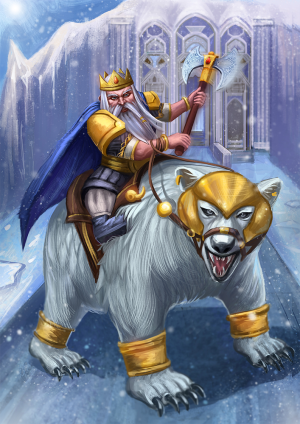
The Denur of Kalan Whitebeard share blood with its most notable ancestor, Belegar Whitebeard. These hardy Mountainfolk originate from the hold of Dar-Azur and have a tendency to delve into the ways of magic due to their long vicinity to the Elrikar. A relatively young Kalan, but their legacy on the High Kingdom has been great, especially during the effort to reclaim Dar-ach Denur. Known as the hardest and most resilient of their kind, they often form the ordered front line in battle. As their name suggests, the Whitebeards proudly wear their white manes for all to see.
Emberthorn
Builders of reverence, the Emberthorn have had a hand in the creation of the many ancient holds, with Dar-ach Denur being the most known among them. Their masons and stoneworkers are unmatched, and it is said they match these skills with equal martial prowess. Their personal stronghold was Dar-Zenour before it was corrupted by the fiends of Lilith and drove them out.
Runefist
A true warrior’s Kalan, the Runefists have been a staple of martial culture within the High Kingdom. Their former hold, Dar-Nathros was said to have rivaled Dar-ach Denur in size and stature before the Urk hordes drove them from their home. Since then, the Runefists have sworn to make good on the grudges held against the Urkar. They sport fiery red manes and scruffy beards and often fight with mighty warhammers, turning their frenzies of rage into a valuable asset for the confederation.
Starbreaker
Claiming shared blood with a distant relative of Arduan Starforged himself, the members of Kalan Starbreaker fill the air with a feeling of arrogance and pride themselves upon their work even more than the average Denur. Their members pride themselves on their smithing prowess and their ability to lead. A Starbreaker is always trying to rise in station and garner riches while doing it. Their midnight black hair is a common feature among their ranks, and sometimes decorate themselves with red war paint.
Rustcracker
They are the ingenious inventors and skilled technicians of the Denur: despite their modest physical stature, they wield unmatched strength through their mastery of magic. Nestled within the formidable fortress of Dar Gur, they channel their extraordinary talents into a ceaseless stream of groundbreaking inventions. Their reputation precedes them, especially in the realm of warfare, where their ingenious war machines have turned the tide of countless battles.
Alcohol
In the Kalan Confederation of Arduan, alcohol holds a revered place within the cultural and social fabric. It is considered more than just a beverage; it is an integral part of communal life and celebrations, embodying both status and tradition. Thus, some Kalan challenges have been a great drinking contest.

At the pinnacle of Arduan's alcoholic hierarchy is beer, particularly those brewed in the esteemed Jägershof Brewery. This beer, renowned for its exceptional quality, commands a high status and is a prized possession at any gathering. The rich, robust flavors and traditional brewing methods of Jägershof beer make it a symbol of prestige and a marker of social standing. Beer from the Hadrian Empire also enjoys a respectable reputation, despite being viewed as somewhat diluted compared to Arduan’s own brews. It is nonetheless appreciated for its distinctive character and is often enjoyed in various settings, adding a touch of foreign charm to local festivities. In contrast, strong alcoholic beverages from the northern regions are savored on special occasions. These potent drinks are prized for their bold flavors and are typically consumed during significant events or as a treat for esteemed guests, reflecting a preference for robust and impactful flavors. At the lower end of the scale is wine, which is largely dismissed by the Denur. Its flavor is considered unpleasant by most, and it fails to hold much appeal within Arduan’s culinary culture. Few wines manage to meet the approval of the Denur palate, making them rare and unremarkable in comparison to the cherished beers and spirits of their homeland.
Celebrations and Traditions
The Gates of Life:
Most Denur living amongst their kin traverse life in multiple stages, with each stage being entered by symbolically passing through a gate to reach the next step in their life. Age contributes to this process without any action required.
When a Denur is born, the Attarsal (ancient Denur religion) demands for the Sorcerer-Oracle or their representatives to be called upon, in order to determine the previous identity of the child's spirit. The return of a spirit is seen as something to cherish and so the child's parents are incentivised to name their offspring after its previous incarnation.
A Denur starts his or her life as a Strommi, progressing to adulthood as a Darstrom or Daraera along with the growth of their hair and beard at roughly 35 years of age. The corresponding ritual involves the decoration of the ascending Denur’s hair and a feast involving their whole Kalan. The young adult hereby also earns their right to start their own family and the right to do business without the consent of their elders.
Later in life, the Denur ages to become a Langstrom or Langaera, a mature member of Denur society. This occurs at roughly 75 years of age and earns the Denur the right to earn the title of master of their craft as well as the right to claim a part of the communal belonging of all Denur to build their own home far from already established holds. Most Denur in this stage are parents or even grandparents and care for their own family within the society.
The last gate is passed to become a Harstrom or Haraera, an elder of the Denur. The Denur has to live to about 120 years to get to pass this gate and experience the honor of their last aging ceremony. No rights are earned at that high of an age, however all Denur treat the elders with high respect by default.
Other Rites:
- Craftsman’s Blessing
After serving under a master, a young Denur who finishes their education becomes a craftsman and is bestowed with their own imbued tool. The tool is crafted by the Denur and their master with great care and then carried to one of the sacred forges to be imbued with the might of the spirits by a Spirit-Smith. This tool is expected to serve a Denur in the pursuit of their craft for life.
- Guardians Vigil
In times of great need, the Denur gather in small groups to symbolically and literally stand guard during night times in the great halls of their people. This nightwatch is held in silence and prayer, in order to commune with the ancestor spirits, invoking their aid and guidance.
- Sacrifice to Stone and Flame
The most important spirits in denuran belief besides the ancestral spirits, are the spirits of fire and earth. All of denuran society relies upon these elemental forces and so sacrificial offerings are periodically brought to places of power in order to sway the spirits in favor of the Denur. Traditionally these sacrifices are made by elemental mages who are especially in tune with the spirits and therefore fit to communicate with them.
- The Hot Bath
The hot springs of the Drzathas mountain range are a central aspect of denuran culture. Each hold has a public spring, where the Denur for one gather to relax as well as exercise, but also handle important business and council. The hot water from these springs is believed to contain the essence of the mountain spirits itself, which surrounds those bathing and bears the ancestors' consciousness. No lie may be spoken in a hot spring. Also the rank and status of everyone is equal there and each opinion voiced must be treated with respect.
- Ancestral Feast
Once each three moons, the Denur meet to feast to honor their ancestors. It depends from Kalan to Kalan if the meeting is held in small family circles or the whole Kalan. During the feast, food and gifts are bestowed upon the ancestors' spirits. Stories of the lives and deeds of the ancestors are recited and shared amongst the Denur. Sometimes the cheerful occasion is used by a Spirit-Smith to imbue a piece of work with the spirits' might and bestow it upon the Kalan.
Festivities:
- Founder’s Day
A day of celebration for the founder of Dar-ach Denur, Arduan. It is usually celebrated with a large feast in Dar-Ach Denur, and all Denur are expected to travel there to celebrate the day.
- The Great Melee
A day of brawling and drinking for the Denur, all are invited to test their mettle and fight to see who is the strongest in the hold. Bets are usually placed and spectators come from afar to watch.
- Keg’s End
Celebrated on the night of the new year, this holiday marks a special moment for the Denur. All kegs within the hold must be emptied when the sun rises, and thrown onto a big pyre which is then set aflame during a ritual, promising good health and prosperity.
- The Anvil's Echo
This festival is dedicated to the denuran craftsmen and honoring their work for the community. From dawn to dusk, the hold of Dar-Gur resounds with the rhythmic clang of anvils, echoing through every hall and tunnel. A day filled with displays of masterful craftsmanship, where artisans showcase their finest works and demonstrate their skills, some even participating in small competitions.
Great Grudges
In the Kalan Confederation of Arduan, grudges are a time-honored tradition, established by the revered Orun Grudgebearer. These grievances are meticulously recorded in the Book of Grudges, a sacred tome passed from leader to leader, preserving the Confederation's collective resolve.
- The Grudge of Reclamation: This grudge focuses on those who obstruct Arduan's efforts to reclaim its fortresses. Those who hinder this mission will face the full weight of Arduan's wrath.
- The Grudge of Honor: This grudge targets those who insult or disrespect Arduan’s noble culture. Offenders will find their words met with resolute silence.
Religious Beliefs
The veneration of the ancestors and an animistic belief in the existence of spirits in the world have always been common among the Denur, but these beliefs usually varied from one individual to another. The Denur have been a wandering people for a long time, meandering between temporary settlement and being hounded from their homes for centuries since the fall of their forefathers once great realm. A unified religion has not been amongst the treasures which could be preserved among the refugees, which is why the current residents of Arduan have just now begun the process of unearthing their forefathers legacy and the ability to return to their peoples ancient beliefs. Following the reclamation of the fortresses Dar-Ach Denur and Dar-Gur, the existence of rituals and documented traditions of the denuran religion have been discovered, with the most important being the grand tenets of the Attarsal (Ancestor-Spirits).
The Core Tenets:
- The Ore-Spirits: Metal, stone and flame are naturally the home of elemental, primal spirits, unwilling to bend to the will of believers. By imbuing the earth with the spirits of the people’s ancestors, this untamed and wild spiritual energy can be calmed down, enabling the spirits of the mountain to be bargained with by a Spirit-Smith. The bargain can be understood as a meditative rite between the smith and his work, ultimately imbuing the product with the living will and might of the ancestors and the elemental.
- The Living Mountain: The ancient holds of the Denur people, most notably Dar-Ach Denur and Dar-Gur, are located in mountains which hold a powerful consciousness in Denur belief. The spirit of the mountain watches over its children, provides them with protection, warmth, food and riches and is in turn venerated by them above all other spirits. These personifications bear unique names and are often depicted as great Denur emerging from the rock of the mountain to speak to the most faithful of their children.
- The Return to the Mountain: The Ancestral Belief teaches that every Denur has been born from the mountain's flesh to live a good and prosperous life and further the beauty created from the gifts of the earth. When a Denur dies, his remains are to be reunited with the stone to allow his spirit to guide the primal energy of the earth into the service of his descendants, allowing him to serve his kin for eternity, united with the matter he was born from once again.
- Ancestral Veneration: The celebration of the living spirits of the dead is an important part of the belief’s festivities. Especially the spiritual imbuing of ritual tools while offering valuable trinkets to the ancestors and feasting among the living kin, while leaving space and food for the dead are core activities of these occasions. The Spirit-Smiths in particular rely on the ancestor’s guidance in the study of the stars and divination and therefore encourage offerings during times of need for prophesy.
- Reincarnation: When an imbued machine or tool loses his potency or breaks down, this is not seen as failure, but rather as a sign of the bound spirit returning in flesh and therefore something to be celebrated. Sometimes spirits hear the call of their people and may choose to leave the embrace of the mountain to join their kin on Eden once more. When a child is born, the Sorcerer-Oracle is called upon to determine its previous identity after whom the parents are expected to name their offspring.
Military
Since denuran history is riddled with holes, the history of the Denur military is also mostly a mystery. However, it is known that it has undergone many changes in size and organization throughout the ages, reflecting its difficult history with many dark periods and tragedies along its way. Their Military is characterized by large and deadly weapons, either warhammers and axes or mighty machines of war, showcasing the stout resilience and power of the Denur people. Each Kalan provides his own sort of specialized warriors into the denuran defense forces, which are now, due to the Denurs low numbers, more of a highly specialized strikeforce and guerilla army. Their deadliness lies in their mastery of the mountains and cruel tactics, able to grind even the mightiest attacker who dares to threaten Arduan into dust.
History
The elders' stories tell of a time when the Denur boasted a legendary Army, characterized by a well-organized and unified structure. This ancient force is said to have been equipped with highly advanced technology, blending traditional weaponry with unique, magical enhancements. Although much about this period remains shrouded in mystery, it is clear that this Army was a force that no other in Eden could even slightly match. No army of equal strength was formed ever again.
During Arduan’s reign, the High-Kingdom possessed a strong military spread across its lands and although evidence suggests it has been inferior to what the ancient stories speak of, it was nonetheless an unstoppable force in its time. (Historians try to find any evidence they can of this time)
With the Mor-Hormung came the final and most devastating downfall to the Denur armies. The military became highly unorganized, lacking the cohesion that once defined it. The loss of so many Denur and their holds brought nothing but turmoil and disarray to a once glorious Empire, leaving behind but one last hold - Dar-Ach Denur. From that point onwards homogeneous units were a thing of the past, as the Denur struggled to maintain any semblance of their former military might. The remaining Denur knew they had to change and adapt in order to survive.
In the Bazal Aldur, the Denur Military ultimately adapted to their reduced numbers and shifted their focus primarily to defense. This era saw the rise of guerilla tactics and highly unique units within each of the great Kalans. With the recapturing of Dar-Gur the Denur began to employ heavy weapons, such as siege engines and giant ballistae, to fortify their lines. While their technology is advancing rapidly, many holds and fortifications still lie unoccupied, crippling its military strength compared to other nations on Eden.
Structure
Given that the Denur are scattered across the mountains, there is no longer a united army under a single banner. Instead, the Kalans operate independently, each maintaining their own forces. Only in the face of a great threat that endangers all Denur does a general army come into existence. During such dire times, the Council of Engineers steps in to command this temporary force. The Protector of Arduan plays a crucial role in these moments of unity, acting as the inspector of the army. This leader is responsible for the gathering of soldiers from every Kalan and ensures their organization into an effective fighting force.
Throughout the Confederation there is a simple System for military ranks, while each Kalan can still add their own by choice. These Ranks consist of Worts, Ales, Spirits and High Spirits. Denur of the Wort Rank, the lowest of them all, are poorly trained and make up the largest portion of the army, containing mostly workers. Ales on the other hand are well trained and experienced fighters, forming the elite center of the army. Spirits, the few best warriors Arduan can think of are designated to lead portions of the army - These legendary and seasoned veterans are usually members of the great Kalans. At the top of the Ranks and only being filled by Kalanfadurs are the High Spirits, acting as Generals and Strategists responsible for leading their Army to ultimate victory.
Military traditions
For the Denur, alcohol is more than just a beverage; it is a crucial element of their fighting style and cultural identity. Preparations for battle are a unique ritual that involves drinking copious amounts of beer and a special brew known as Jägermeister until a minimum blood alcohol level is reached. This ritual is believed to bestow upon them superior fighting power through a state of controlled drunkenness. The Denur hold a firm belief in the beneficial effects of this combination of drinks, for Jägermeister is not merely alcoholic, but also hallucinogenic in nature, imbuing the warrior with the wrath of spirits called to inhabit their bodies. The nutritional qualities of Jägermeister, when paired with their robust Denur beer, are thought to enhance their strength, stamina, and resilience in combat. This potent mix fortifies their bodies and sharpens their instincts, turning each Denur into a formidable warrior.
Beyond their unique battle preparations, the Denur warriors live by a simple yet profound code of honor that is deeply connected to their Kalans. This code shapes their actions and decisions throughout their whole lives. In every skirmish and campaign, the Denur fight not just for survival but to bring glory to their Kalan and protect its honor.
Kalan Military
Rustcracker
Having a strong focus on technological advantage rather than high numbers, military units of the Rustcracker Kalan are well equipped and support large weapons and advanced machinery. Engineers and Mages therefore make up the majority of the Rustcracker Military.
Whitebeard
Whitebeards are renowned for their fearsome axemen. Warriors of this Kalan are heavily armored and wield massive, often double-headed axes and hammers. These Fighters are experts in melee combat, focusing on strength, endurance and disciplined formations. Whitebeards are well known for their unbreakable courage across Denur lands, some telling stories of troops holding their line for days or even weeks without losing ground.
Emberthorn
Soldiers from Kalan Emberthorn are specialized in the rapid construction of fortifications, camps and other defensive structures. While also being skilled fighters these Denur are mainly used as expert builders, capable of constructing defensive camps in mere hours. Emberthorns build palisades, trenches and siege weapons in record time, while also adapting perfectly to the environment. Every functioning army relies heavily on these units.
Runefist
The warriors of Kalan Runefist are known for their zealous spirits in battle, wielding weaponry covered with runic inscriptions and imbued with the power of spirits by denuran Spirit-Smiths. They charge fearlessly into their enemies lines like berserkers, shrugging off blows and dealing devastating swings with their mighty warhammers with the wrath of the ancestors. They favor to be lightly armored to gain speed and agility in battle while believing in the spirit's guidance to act as their shields instead. A Runefist would rather die on the battlefield than retreating, if even a single foe is still standing.
Starbreaker
Kalan Starbreaker is best known for its hunters, who live in the forested mountains of the east. Nestled among towering pines and high cliffs, their homeland provides the perfect terrain for their most precious skill - Archery. The preferred weapons of this Kalan are bows and crossbows, their proficiency with these being unmatched among all Denur. Starbreakers crossbows are feared for their innovative designs and deadly force. In battle, Starbreakers use hit-and-run tactics, ambushes and coordinated volleys of arrows that decimate enemy ranks way before they can even approach. Their archers prefer elevated positions in the mountains, while some brave crossbowmen even fight in the front lines.
Political Beliefs
Government structure
Old System
In the days when all fortresses were still under control, each fortress had its own independent government, led by one of the great Kalans, with Dar Ach Denur serving as the spiritual center and the seat of the King. To ensure greater stability and unity, the High Council was established. This council, composed of all the great Kalan leaders, met under the Harrikum's guidance to plan their collective future actions. This system persisted for quite some time, even as the fortresses were lost. However, as the numbers of the great Kalans began to dwindle, the system started to crumble. The government became stagnant and increasingly self-obstructive, leading to a period of severe political gridlock.
Current System
The nation retains a status as an elective monarchy, yet significant reforms have been implemented to adapt to current needs and challenges. The traditional High Council of Kalanfadurs who once ruled the land has been replaced by two new governing bodies: the Great Council of Kalans and the Council of Engineers. These two institutions form the government of the country and deal with all issues affecting the nation.
Great Council of Kalans
- Composition: All citizens of the nation are members of this council, essentially functioning like a form of direct democracy.
- Function: Has the authority to vote on significant laws and decisions. This council embodies the will of the people through regular and transparent voting processes.
- Decision-Making: Decisions are made by majority vote, with each citizen having an equal vote.
- Harrikum(High King) Election: A new Harrikum can be elected only if 75% of the all existing council members agree.
- Role of the Harrikum: If a Harrikum is elected, they hold the right to cast the deciding vote in cases of a tie within the council.
Council of Engineers
- Composition: This council consists of three esteemed experts chosen for their knowledge and experience in science, technology, and infrastructure.
- Function: The Council of Engineers is responsible for making decisions related to technical and administrative matters. They also serve as advisors and represent the Great Council of Kalans on an international level.
- Decision-Making: The council makes decisions through consensus or majority vote among its three members.
- Wartime Authority: In situations of war or significant external threats, the Council of Engineers is granted full decision-making authority to ensure swift and effective responses.
Fundamental Laws
- The Dignity of Every Citizen is Sacred
- The honor and dignity of every Denur shall remain unassailable, respected by all.
- Freedom of Expression and Development
- Each Denur is free to pursue their own path and speak their mind without fear of retribution.
- Prohibition of Destruction, Theft, and Violence
- No Denur shall engage in wanton destruction, theft, or violence against another. Such actions are a grievous offense.
- Right to Challenge
- Any minor Kalan may challenge a great Kalan to test its mettle and claim its standing. This challenge must be answered or risk bringing shame upon the great Kalan.
- Resolution of Conflicts
- Disputes and conflicts shall be brought before the Great Council of Kalans. With mutual consent, a duel may resolve the matter honorably.
- The great Grudges
- The Grudges are a guideline for the culture of the Denur and must always be implemented in good conscience
- Advancement of the Nation
- The continuous development and progress of the nation shall be the highest priority, fostering innovation and unity.
- Fraternity in Stone
- All Denur are children of the mountain and expected to share possession, burden and achievement amongst their kin
Punishments
In the confederation, Kalan leaders are primarily responsible for determining the appropriate punishments for their members. These punishments can range from cleaning latrines and performing hard labor in the mines to, in extreme cases, exile from the Kalan and community. If a punishment is deemed unfair or inadequate, the case can be escalated to the Great Council of Kalans. The Council has the authority to review the decision and modify the punishment if necessary. This body also handles cases involving individuals who are not affiliated with any Kalan, including Kalan Leaders and non-citizens.
History
The history of the Denur is long and characterized by many gaps. However, thanks to the pride of the Denur and their stories and tales, some information has been preserved.
Gamall Aldur (Old Age) [unknown]
Long forgotten and relegated to the realm of myths and ancient tales, today's scholars suspect a time before the formation of the High-Kingdom, an epoch of unprecedented progress and prosperity Only scattered ruins adorned with enigmatic runes and a handful of fragile manuscripts remain, whispering fragments of the secrets from a bygone era. The legacy of this potential Denur Empire endures as a testament to a time when the boundaries of possibility were redefined, compelling us to piece together the grandeur of a civilization that has long since vanished into the annals of history. As far as the Denur of today know, there was one before Arduan, one who stood at the beginning of their lineage.
Deonach the Golden [unknown]
Deonach remains an enigmatic and revered figure, venerated as a deity by the ancient Denur. Deonach was said to wield unparalleled mastery over both rock and fire, forming the underground in his design for the Denur people. Under his divine guidance, some scholars believe the Denur experienced their most magnificent era, reaching unprecedented levels of prosperity and might. Remnants of this time can be found all over Eden, signifying the extent of the denuran civilization of old. Much of this time is still veiled in mysteries, such as the true nature of Deonach and the exact time of his age before the High-Kingdom. The empire flourished, expanding its influence and technological prowess to heights previously unimagined. However, the grandeur of his reign met a tragic end. Upon Deonach’s death, a celestial conflict erupted between Kor and Ignos, each spirit laying claim to his soul. The struggle was so fierce that it resulted in the fragmentation of his essence, leaving his once-great spirit torn between the elements he had so skillfully commanded.
Mor-Hormung (Great Collapse) [unknown]
A first great collapse, similar to the Mor-Hormung in more recent years is believed to have happened in the ancient times, leaving only what can be found today of the Gamall Aldur. Until more knowledge is found by the Denur of today, the exact nature of this collapse remains shrouded.
The Monolith of the Ancestors recounts the harrowing epoch of the first Mor-Hormung, the Great Collapse. This cataclysmic period marked the zenith of an era when the fusion of magic and technology reached a perilous threshold of self-destruction. The unimaginable power harnessed by the Denur Empire, once a beacon of progress, turned against itself, leading to a devastating unraveling of their civilization. As the boundaries between arcane forces and technological marvels eroded, the very fabric of reality was compromised. This catastrophic breach allowed monstrous beasts to cross the threshold into their world, wreaking havoc upon the empire. The once-mighty Denur were overwhelmed and forced into a desperate struggle for survival, their once-unassailable civilization brought to its knees by the forces they had unleashed.
Myrkur Aldur (Age of Honor) [1 - ~900]
The first written records of denuran culture stem from the Myrkur Aldur and the reign of Arduan, the first Harrikum. Arduans reign and his successors' reigns alike were characterized by stability and tradition for all Denur, with most of the realms foundation believed to be established during it. The Denur of this time are known to have been very traditional and strict, adhering to detailed rules for each aspect of life and mostly rejecting progress. Significant pieces of history are missing from the accounts of this era, with accounts of only a few Harrikum’s reigns having survived the past centuries. For a long time Arduans time was believed to be the beginning of the Denur, however, this view is getting challenged, with accounts from the Gamall Aldur becoming more frequent and more and more inconsistencies in the old accounts becoming apparent.
In the aftermath of Mor-Hormung, the Great Collapse, the era of Myrkur Aldur began with the Denur's deliberate effort to bury the past and avoid confronting the reasons behind their devastation. Despite this intentional amnesia, their remarkable resilience allowed them to rebuild and nearly regain their former glory. Myrkur Aldur thus represents both a new beginning and a testament to the Denur's ability to recover and restore much of their lost prosperity and influence.
Arduan Starforge [~1-190]
Arduan, the first Harrikum of the Denur, is credited with building Dar-ach Denur as a haven for his people, protected from external dangers. A renowned commander and leader, he wielded a large greataxe adorned with a shining white gem, crafted from a meteorite found in the Dzrathas Mountains. This greataxe, known as the Starforged Greataxe, became the symbol of the king. Arduan is often depicted with a great brown beard and burning hazel eyes. The High Kingdom was named in his honor, and he is revered as the Father of the Mountain. He pioneered the use of earth's minerals, leading to the construction of Denur keeps with ingenious contraptions of bronze, iron, gold, and dark steel.
Argilac Stoneguard [~190-380]
Famed as one of the greatest geomancers of his time, Argilac was the Harrikum of Arduan who ushered in an era of peace. Under his reign, the Denur prospered, and geomancy spread widely across the holds. Argilac's wisdom led to the construction of numerous underground trade routes. He continued the work of Arduan, developing the holds into nearly impenetrable strongholds. During this time, fortresses such as Dar-Azur, Dar-Zenour, Dar-Vziun and Dar-Nathros, now known as Zadh Nadrozz, were expanded.
Torsem Rustcracker [~550-660]
An unusual Harrikum for his time, Torsem tried to break with some of the ancient laws of denuran society by supporting the establishment of engineering as a new tradition in the realm. He is said to be the founder of the great hold of Dar-Gur, establishing the tradition of engineering and invention in this singular keep. Most of the High-Kingdoms Kalans were at odds with his ideas however, rejecting the more progressive agenda of the Harrikum. Therefore not much of his influence spread across the borders of Dar-Gur.
Nidr Aldur (Age of Decay) [~900-1509]
The Age of Decay marks a period of profound decline and fragmentation, characterized by the devastating impact of the Harrikums - malevolent forces that carved vast, gaping fissures into the kingdom. This era witnessed a slow, inexorable descent into chaos, with the Harrikums weakening the very fabric of civilization and leaving deep rifts that undermined societal structures. These initial cracks, both physical and metaphorical, symbolized a broader erosion of stability and prosperity, setting the stage for a great disaster.
Thorgar Scatterbrain [1255-1440]
In ancient Denurúm, "Thorgar" is an insult, meaning foolish and incompetent. King Thorgar's reign is remembered for great losses. His reign is believed to be the peak of centuries of quarreling and incompetent Harrikums, whose names have been lost to history. Under his misguided leadership, Dar Gur, the center of denuran science, was sealed forever due to a catastrophic malfunction. Zadh Nadrozz, formerly Dar-Nathros, was conquered by orcs and with it the remaining fortresses in the south Dar-Zenour and Dar Viziun also fell. He is also blamed for the big gap in history. It was he who was responsible for the biggest fire in the ancient Archives. The name "Thorgar" thus became synonymous with foolishness, marking a dark chapter in denuran history.
Orun Grudgebearer [1440-1483]
Following the sad low that was Thorgars reign, Harrikum Orun was a glimmer of hope for a High-Kingdom which had been in decay for centuries. He is remembered as one of the greatest High Kings to have lived, forging the Great Book of Grudges and declaring all slights against the Denur people be written within it, to be avenged at the hands of himself and all future Harrikums. A great council was called where all the Kalans could write down their grudges within the book, creating a collective list of grudges against their foes. The Great Book of Grudges is now passed down from each Harrikum to the next and provides the base for Denur culture. This would be the origin of the High Council, which was operating until recently.
Mor-Hormung (Great Collapse) [1509-1512]
The fall of the great High-Kingdom, when the remaining holds of the Denur were taken. Dar Azur was overtaken by a voidal infestation from within and Dar Ach Denur was conquered by orcs. During this turbulent period, almost all remaining knowledge was lost, and 90% of the population vanished.
Uldrig Proudfist [1483-1510]
The sitting Harrikum during the Great Collapse, known for his pride, some Denur speculate that is what brought forth the downfall of his Kingdom. Uldrig is often remembered as an angry Denur, more stubborn than most. He believed in denur supremacy over anything else, refusing to take aid when the High Kingdom most needed it. Uldrig shut the doors of the great denur holds during the Rotting Plague, causing the rations to dwindle quickly and the farms outside to be abandoned. When the Rotting Plague was over, not many Denur had even known it was really going on. The five years of the plague were spent indoors by the Denur, with only a few succumbing to it due to travelling outside of the holds when the plague first hit. When the Denur emerged from their isolation, they had been richer through years of dedicated mining. However, they found their farms were no longer functioning which caused The Great Starvation. An event where many Denur folk lost their lives due to the lack of insight by their Harrikum.
Bazal Aldur (Age of Struggle) [1512 - today]
One might expect a successful reconstruction to follow the disaster, but this is not the case. Although the Denur are stronger, live longer, and appear better looking than humans, they have one critical weakness: their birth rate. Over the years, their population has plummeted to around 1000, and their numbers continue to dwindle. As a result, several individuals and groups have dedicated themselves to averting the Denur's extinction despite numerous adversities.
Grilthram Runefist [1526-1528]
High King Giltrham faced immense challenges as he succeeded Uldrig, striving to revive the Denur from near destruction. Shortly after the reclamation of Dar, which had been seized by the Orcs, Giltrham ascended to the throne. Under his command in 1527, the Denur faced formidable foes, including the Scion of Zarzareth, a monstrous entity that threatened their very existence. In a pivotal battle on the stone bridge, Giltrham led his people in a desperate struggle. With unwavering resolve, he rallied the warriors, including the valiant Knights of Hadriana and loyal Kalansmen, against the relentless enemy. In 1528, a severe famine devastated the land, prompting Giltrham's efforts to restore food production and hope. Amidst their darkest hour, a demon from the shadows seized the opportunity to annihilate the Denur. Giltrham bravely confronted the beast, buying precious time as his comrades fled. Despite their earlier triumph, the Denur were ultimately forced to abandon Dar-Ach Denur once more, leaving their reclaimed homeland behind as they embarked on a desperate quest to find a new sanctuary.
Belegar Whitebeard [1532-1536]
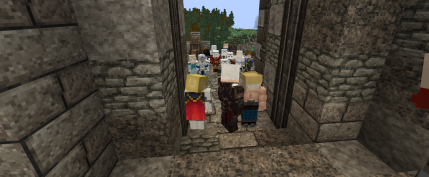
Also known as the Conqueror, he was a legendary figure who sought to unify the scattered Denur under a common cause: the recapture of Dar Ach Denur. During his reign, he rallied the dispersed denuran Kalans and inspired them with the vision of reclaiming their ancestral homeland. In 1535, the last great Geomancer Archmage, a powerful and revered mage, stood against the menacing horde of the underworld. He led the denuran troops with unmatched skill and determination, steering them to a triumphant victory. Under his command, the High Kingdom, which had long been fragmented and weakened, experienced a resurgence of strength and unity. The climactic moment of this reunification occurred in the historic Jägershoff Brewery, a symbolic location to all Denur.
Phyrra Obryn [1536-1541]
Phyrra Obryn is a pivotal figure in denuran history, known for her radical reforms and decisive leadership. Rejecting old values and ending long-held traditions, she led the state towards a new era. Under her rule, the state officially became religion-free, promoting a secular government. She also dismantled the nobility, removing the high status of the old Kalans and establishing a more egalitarian society. Phyrra spearheaded numerous reforms that transformed the political and social landscape. Most notably, in 1540, she led the final crucial offensive to fully liberate Dar-Ach Denur from its oppressors. Her leadership didn't stop at the battlefield; she also oversaw the rebuilding efforts, ensuring the city's restoration to its former glory.
Alaric Starbreaker [1545-1549]
Alaric was a visionary leader who, in 1547, forged a historic alliance with humans and elves to combat the formidable Bonelord. Under his guidance, society was steered back to its ancient roots, rekindling a sense of shared heritage and purpose. Recognizing the need for unity and strong leadership, Alaric revived the Great Kalans and reinstated the High Council, ensuring that the wisdom and authority of the past guided the Denur into the future. Alaric’s tenure was marked by a renaissance of lost knowledge, as his talented inventors revived many forgotten technologies and practices. His efforts didn't stop there; he was instrumental in recovering the ancient Denur relics and the original lost Book of Grudges. These accomplishments not only solidified his legacy but also reinvigorated the cultural and historical identity of his people.
Kalan Rustcracker [1549-today]
The two-year-long and extremely costly war with the Bonelord inflicted devastating casualties on the Denur, nearly annihilating all the great Kalans. However, the Rustcracker Kalan, utilizing their ingenious machines, largely avoided the devastation. As the empire teetered on the brink of collapse, they seized the scepter and established a transitional government. They still govern to this day, having secured their rule by recapturing the lost hold of Dar-Gur. Additionally, with the help of humans, they established Port Vôn, a vital bridge between the two civilizations, strengthening both trade and diplomatic ties. While they pursue a more liberal policy, the Rustcracker Kalan is also deeply committed to guiding the people back to their roots, ensuring that the Denur heritage remains central to their identity.

